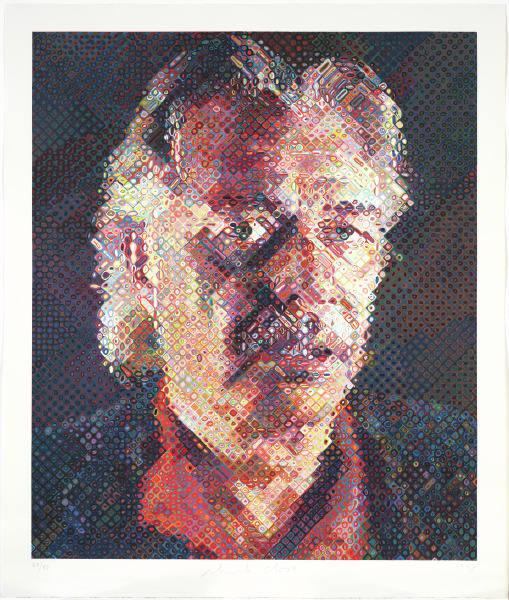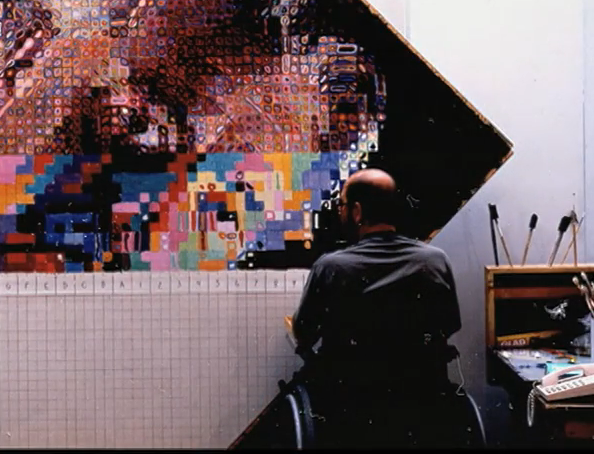
John (Primary Title)
Chuck Close, American, 1940 - 2021 (Artist)
“If you do your job right . . . one piece of information at a time, you end up with something that has emotional impact without having to resort to emotional gestures.” —Chuck Close
Close has become linked to a single defining subject—the human face. This image is of John Chamberlain, whose sculpture of crushed automobile parts is in the next gallery. Close takes Polaroid photographs of his subjects, draws a grid, and transfers the image square by square to paintings, drawings, and prints.
By the 1970s, Close had abandoned the continuous surface of his airbrushed Photorealist work and exposed the grid, drawing attention to the mechanics of representation. His later works, such as this, offer more abstract, discontinuous surfaces by treating each unit as a visible element filled with dabs of color. This print, which required 126 different screens, retains the dynamic pixilation of Close’s late paintings.
Chuck Close @ VMFA
2:37Hear and see what major artists have to say about their works and concepts in their own words. These concise videos–2 to 3 minutes–are historic interviews recorded one-on-one by VMFA in the 1990s and early 2000s.
Chuck Close @ VMFA
2:37Some object records are not complete and do not reflect VMFA's full and current knowledge. VMFA makes routine updates as records are reviewed and enhanced.


